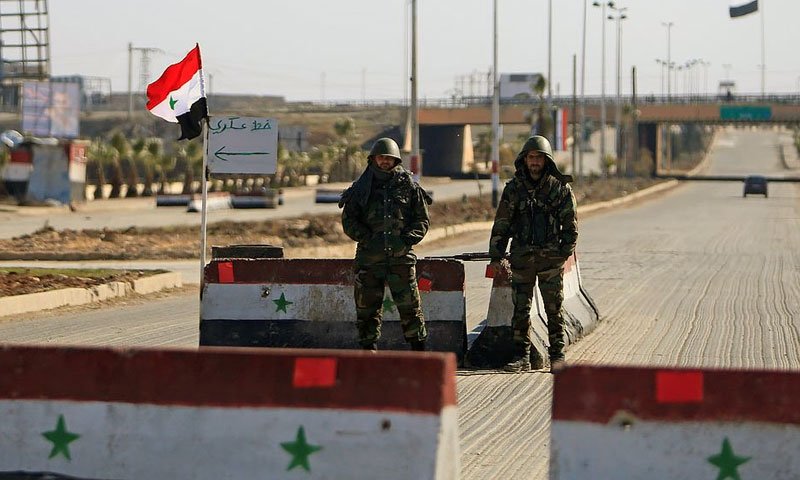



On 10 January 2020, Bashar al-Assad, head of the Syrian regime and commander-in-chief of the Syrian Armed Forces, issued a circular ordering a rollback of army mobilization to regular status, that is to pre-2012 levels.
Combat readiness was scaled down in all departments of the Syrian military; reduced from 66 to 33 percent in administrative departments, and from 80 to 50 percent in their affiliated military units.
Readiness within the Ground Forces and the Navy was reduced from 100 to 80 percent. In military hospitals, however, readiness continues unchanged, maintained at 80 percent.
An informed source, a non-commissioned officer at one of the army’s operation rooms, told Enab Baladi that the room received a fax letter with the above orders on 10 January. The next day, a copy of the circular arrived in, signed by the general commander.
The detachment was fast to reassemble forces according to the rates in the circular, the source added.
The essential part of the circular, the source added, was an article that provided for reducing food shares allocated to barracks because recruits will be permitted more leaves under the new orders.
Leave permits are still the same, but food allocations were immediately curtailed in line with the updated rates, a recruit of the Air Force told Enab Baladi.
Under the existing Military Leave Act, members of the army are entitled to a maximum of 30 days in each service year, the recruit added. While officers and volunteer recruits are the primary beneficiaries of these leaves, troops hope that the recently enforced decision of reducing readiness might expedite discharge orders.
It was during the 1948 war against Israel that the Syrian regime maximized combat readiness for the first time. It maintained a state of alert since then. Levels of military readiness decreased or increased during active combat with foreign or domestic actors.
Syrian regime ramped up mobilization after the 2011 Syrian revolution broke out, and peaceful protests shifted to militarized forms in 2012 in response to excessive use of force by the regime.
Before 2011, the total number of the Syrian Army was estimated at about 325,000 men, of which 220,000 were ground forces. The army consists of three main forces: Ground Forces, Air Forces (100,000 men including 40,000 in air forces and 60,000 in air-defense), and Navy (4,000 men), according to a report issued by the Russian International Affairs Council (RIFC).
Prior to the revolution, the army predominantly consisted of conscripts who served 2.5 years. During peacetime, up to 125,000 men were conscripted into the army annually. It also had 354,000 reservists, reported the RIFC.
After 2011, the army’s military strength went down by an estimated two-thirds. In 2012, the Russian and Iranian military assistance has staved off the collapse of the regime and its forces, according to Syria Profile by Tawazun—Index of Arab Civil-Military Relations.
In 2020, the number of the Syrian Army combatants is an estimated 169,000, Tawazun reported, concluding that the Syrian regime’s army has “low efficiency” in the areas of governance, military professionalism, social and cultural perception, defense finance and economics, and civilian competence.
if you think the article contain wrong information or you have additional details Send Correction